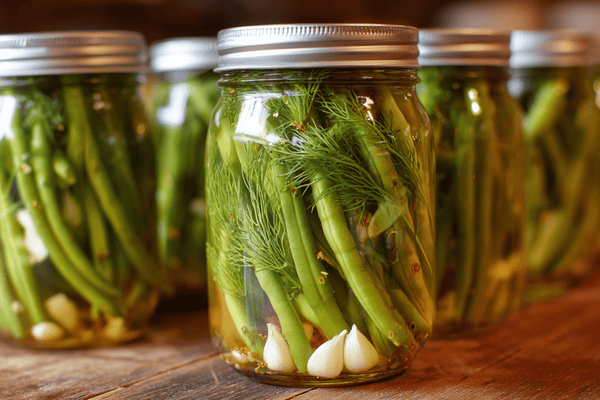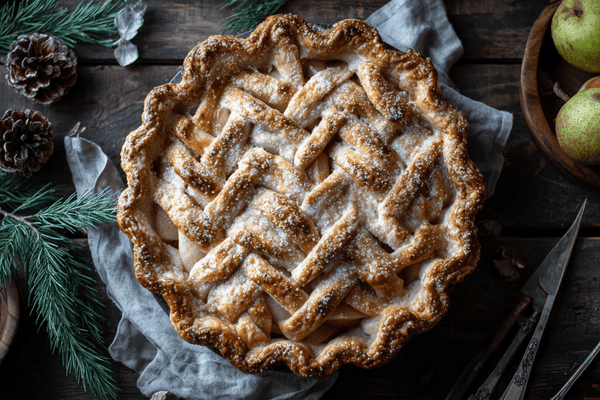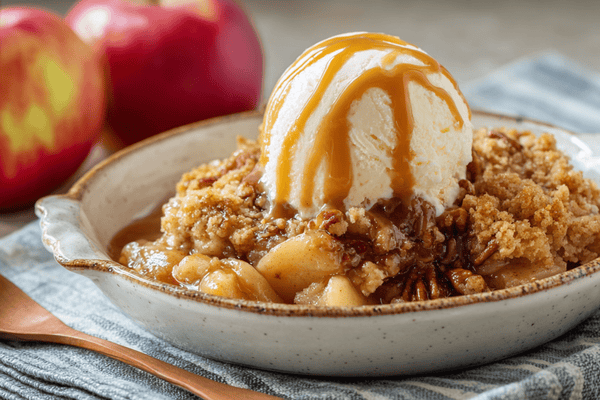
A frying pan, also known as a skillet, is a versatile kitchen tool used for cooking various dishes. The primary function of a frying pan is to fry food, but it can also be used for sautéing, searing, and browning.
Frying pans are usually made from various materials, including cast iron, stainless steel, aluminium, and copper. Each material has unique properties that make it suitable for specific types of cooking.
In this article, we'll explore the different types of frying pans and the materials they are made from, as well as their uses, benefits, and drawbacks.
Table of contents
Cast Iron Frying Pans
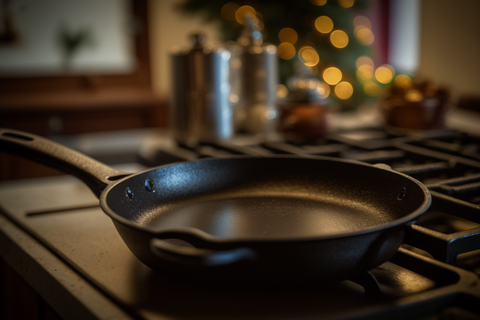 Cast iron frying pans are heavy and durable, making them ideal for high-heat cooking. They are also perfect for searing and browning food because they retain heat well and distribute it evenly. Cast iron frying pans are also great for cooking dishes that require a long cooking time, such as stews and casseroles.
Cast iron frying pans are heavy and durable, making them ideal for high-heat cooking. They are also perfect for searing and browning food because they retain heat well and distribute it evenly. Cast iron frying pans are also great for cooking dishes that require a long cooking time, such as stews and casseroles.
One of the benefits of cast iron frying pans is that they are virtually indestructible. They can last a lifetime with proper care and can even be passed down from generation to generation.
However, cast iron frying pans require special care and maintenance, including seasoning and proper storage. They are also not dishwasher safe and can be challenging to clean if not cared for properly.
Stainless Steel Frying Pans
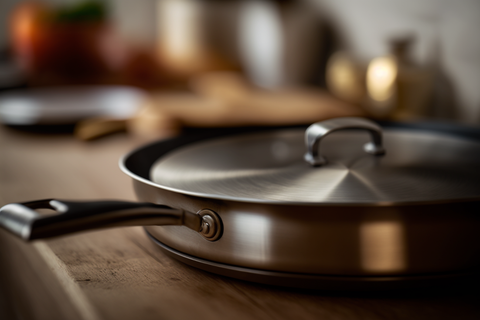 Stainless steel frying pans are popular among professional chefs and home cooks. They are lightweight, easy to clean, and resistant to rust and corrosion. They also have a sleek and modern appearance, making them a great addition to any kitchen.
Stainless steel frying pans are popular among professional chefs and home cooks. They are lightweight, easy to clean, and resistant to rust and corrosion. They also have a sleek and modern appearance, making them a great addition to any kitchen.
Stainless steel frying pans are also great for high-heat cooking and ideal for searing and browning food. They are also safe for use on all stovetops, including induction.
However, stainless steel frying pans can be more expensive than other types of pans, and they may not retain heat as well as other materials. They can also be prone to warping if not handled correctly.
Aluminum Frying Pans
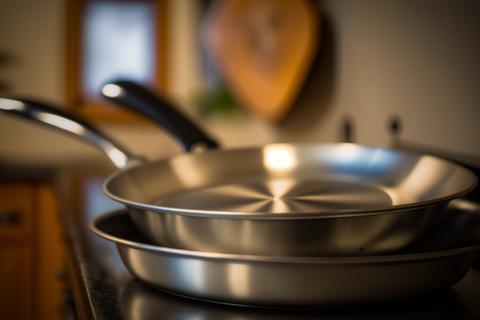 Aluminium frying pans are lightweight and easy to handle, making them a popular choice among home cooks. They are also affordable and widely available, making them an excellent option for those on a budget.
Aluminium frying pans are lightweight and easy to handle, making them a popular choice among home cooks. They are also affordable and widely available, making them an excellent option for those on a budget.
Aluminium frying pans are also great for high-heat cooking, and they distribute heat evenly, making them ideal for cooking delicate dishes such as omelettes and pancakes. They are also safe for use on all stovetops, including induction.
However, aluminium frying pans are not as durable as other materials and can be prone to warping and scratching. They are also not as good at retaining heat as other materials.
Copper Frying Pans
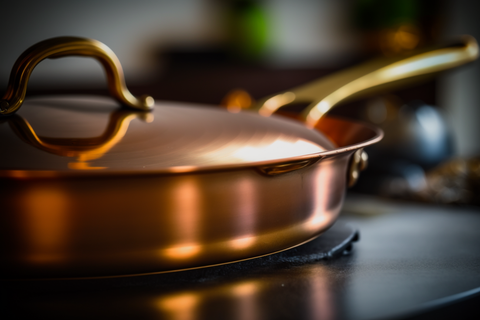 Copper frying pans are the most expensive on the market, but they offer many benefits that make them a great investment for serious cooks. Copper is an excellent conductor of heat, and copper frying pans distribute heat evenly and quickly, making them ideal for cooking delicate dishes such as sauces and eggs.
Copper frying pans are the most expensive on the market, but they offer many benefits that make them a great investment for serious cooks. Copper is an excellent conductor of heat, and copper frying pans distribute heat evenly and quickly, making them ideal for cooking delicate dishes such as sauces and eggs.
Copper frying pans are also visually appealing and add a touch of elegance to any kitchen. They are also safe for use on all stovetops, including induction.
One of the drawbacks of copper frying pans is that they require special care and maintenance to keep them looking their best. They must be regularly polished and treated with a special solution to prevent discolouration and tarnishing.
Ceramic Frying Pans
 Ceramic frying pans are made from a non-toxic, non-reactive material that is known for its non-stick properties and fast heating capabilities. They are ideal for cooking delicate dishes and reducing the amount of oil needed for cooking. However, they are prone to scratching and may not be suitable for high-heat cooking.
Ceramic frying pans are made from a non-toxic, non-reactive material that is known for its non-stick properties and fast heating capabilities. They are ideal for cooking delicate dishes and reducing the amount of oil needed for cooking. However, they are prone to scratching and may not be suitable for high-heat cooking.
Anodized Frying Pans
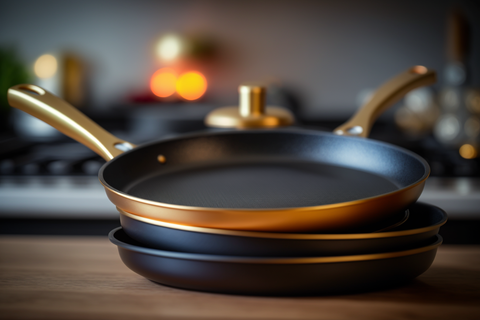 Anodized frying pans are made from aluminum that has been treated with an electrochemical process to make them harder, smoother, and more durable. They are known for their fast heating capabilities and even heat distribution, making them ideal for high-heat cooking. However, they are prone to scratching and may not be suitable for cooking delicate dishes.
Anodized frying pans are made from aluminum that has been treated with an electrochemical process to make them harder, smoother, and more durable. They are known for their fast heating capabilities and even heat distribution, making them ideal for high-heat cooking. However, they are prone to scratching and may not be suitable for cooking delicate dishes.
Non-Stick Frying Pans
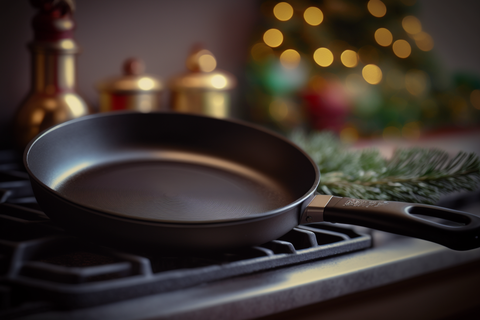 Non-stick frying pans have a special coating that prevents food from sticking to the pan's surface. This makes them a popular choice for cooking delicate foods such as eggs and fish and for those who want to reduce the amount of oil needed for cooking.
Non-stick frying pans have a special coating that prevents food from sticking to the pan's surface. This makes them a popular choice for cooking delicate foods such as eggs and fish and for those who want to reduce the amount of oil needed for cooking.
Non-stick frying pans are also easy to clean and maintain, as food and grease can be wiped away with ease. They are also safe for use on all stovetops, including induction.
However, non-stick frying pans have a limited lifespan, and the non-stick coating can wear off over time, leaving the pan prone to scratching and peeling. They also cannot be used with metal utensils, as the metal can scratch the non-stick coating.
Granite or Stone Frying Pans
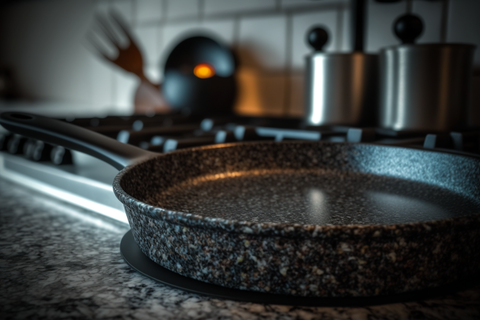 Granite or stone frying pans are made from a combination of materials, such as ceramics, stone, and titanium. These pans are known for their durability and non-stick properties. They are ideal for cooking delicate dishes and reducing the amount of oil needed for cooking. However, they are prone to chipping or cracking with rough handling, so it's important to handle them with care.
Granite or stone frying pans are made from a combination of materials, such as ceramics, stone, and titanium. These pans are known for their durability and non-stick properties. They are ideal for cooking delicate dishes and reducing the amount of oil needed for cooking. However, they are prone to chipping or cracking with rough handling, so it's important to handle them with care.
Copper Core Frying Pans
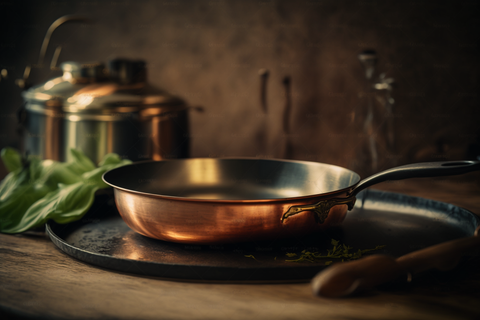 Copper core frying pans have a copper exterior for excellent heat conductivity and a stainless steel interior for durability and easy cleaning. They are ideal for cooking high-heat dishes, sauces, and eggs. However, they are expensive and prone to discolouration with prolonged use.
Copper core frying pans have a copper exterior for excellent heat conductivity and a stainless steel interior for durability and easy cleaning. They are ideal for cooking high-heat dishes, sauces, and eggs. However, they are expensive and prone to discolouration with prolonged use.
Titanium Frying Pans
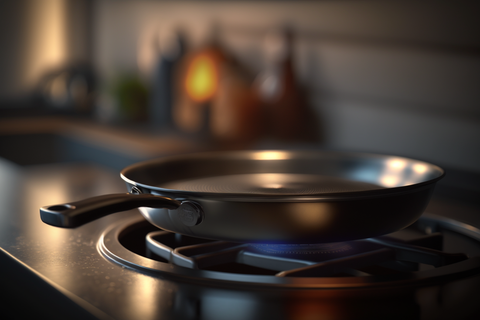 Titanium frying pans are made from strong, lightweight materials and are known for their non-stick properties and fast heating capabilities. They are ideal for cooking delicate dishes and reducing the amount of oil needed for cooking. However, they are prone to warping and have a limited lifespan.
Titanium frying pans are made from strong, lightweight materials and are known for their non-stick properties and fast heating capabilities. They are ideal for cooking delicate dishes and reducing the amount of oil needed for cooking. However, they are prone to warping and have a limited lifespan.
Induction Frying Pans
 Induction frying pans are designed specifically for use with induction cooktops. They have a magnetic base that heats up quickly and evenly, making them ideal for high-heat cooking and delicate dishes. However, they are limited in compatibility with cooktops and may not be suitable for all types of cooking.
Induction frying pans are designed specifically for use with induction cooktops. They have a magnetic base that heats up quickly and evenly, making them ideal for high-heat cooking and delicate dishes. However, they are limited in compatibility with cooktops and may not be suitable for all types of cooking.
Comparison Table of Frying Pans
| Type of Frying Pan | Uses | Advantages & Disadvantages |
|---|---|---|
| Cast Iron | High-heat cooking, searing, browning, slow cooking | Durable, retains heat well, distributes heat evenly; Requires special care and maintenance, not dishwasher safe |
| Stainless Steel | High-heat cooking, searing, browning | Lightweight, easy to clean, rust and corrosion resistant; Prone to warping, may not retain heat well |
| Aluminum | High-heat cooking, delicate dishes | Lightweight, affordable, distributes heat evenly; Prone to warping and scratching, not good at retaining heat |
| Copper | Delicate dishes, sauces, eggs | Excellent conductor of heat, visually appealing; Expensive, requires special care and maintenance |
| Non-Stick | Delicate dishes, reducing oil needed for cooking | Easy to clean, prevents food from sticking; Limited lifespan, prone to scratching and peeling |
| Carbon-Steel | High-heat cooking, searing, browning | Lightweight, excellent heat conductor and distribution; Prone to rust and discoloration with prolonged use |
| Ceramic | Delicate dishes, reducing oil needed for cooking | Non-toxic, eco-friendly, easy to clean; Prone to scratching and chipping, not suitable for high-heat cooking |
| Anodized | High-heat cooking, delicate dishes, reducing oil needed for cooking | Durable, resistant to scratches and warping, distributes heat evenly; Not suitable for use with metal utensils, not dishwasher safe |
| Granite or Stone | Delicate dishes, reducing oil needed for cooking | Durable, non-stick properties, fast heating capabilities; Prone to chipping or cracking with rough handling |
| Copper Core | High-heat cooking, searing, browning, sauces, eggs | Excellent heat conductor, durable, easy to clean; Expensive, prone to discoloration with prolonged use |
| Titanium | Delicate dishes, reducing oil needed for cooking | Lightweight, non-stick properties, fast heating capabilities; Prone to warping, limited lifespan |
| Induction | High-heat cooking, delicate dishes | Fast heating, precise temperature control, efficient; Limited compatibility with cooktops, may not be suitable for all types of cooking |
FAQs
Q: What is the best type of frying pan for high-heat cooking?
A: The best type of frying pan for high-heat cooking is one that is made from materials that can withstand high temperatures and provide excellent heat conductivity, such as cast iron, stainless steel, and copper core frying pans.
Q: What is the best type of frying pan for cooking delicate dishes?
A: The best type of frying pan for cooking delicate dishes is one that is made from materials that provide non-stick properties and fast heating capabilities, such as ceramic and titanium frying pans.
Q: What is the best type of frying pan for reducing the amount of oil needed for cooking?
A: The best type of frying pan for reducing the amount of oil needed for cooking is one that has non-stick properties, such as ceramic, titanium, and granite or stone frying pans.
Q: What are the disadvantages of using cast iron frying pans?
A: The disadvantages of using cast iron frying pans include their heavy weight, the need for seasoning and maintenance, and their tendency to rust if not properly cared for.
Q:What are the disadvantages of using stainless steel frying pans?
A:The disadvantages of using stainless steel frying pans include their tendency to heat unevenly and their poor heat conductivity, which may require longer cooking times.
Q:What are the disadvantages of using copper core frying pans?
A:The disadvantages of using copper core frying pans include their high cost and their tendency to discolor with prolonged use.
Conclusion
In conclusion, there are many types of frying pans available on the market, each with its own unique properties and uses. When choosing a frying pan, it's important to consider your cooking needs, budget, and personal preferences. Whether you're in the market for a durable and heavy-duty pan for high-heat cooking, a lightweight and affordable option for delicate dishes, or a non-stick pan for reducing oil, there is a frying pan to suit your needs.
When making your choice, consider the material of the pan, its heat distribution properties, and how easy it is to clean and maintain. Take into account any drawbacks, such as the need for special care and maintenance or the limited lifespan of the non-stick coating.
Ultimately, the type of frying pan you choose will depend on your individual cooking style, needs, and preferences. No matter which type you choose, a quality frying pan is an essential kitchen tool that will provide you with years of cooking enjoyment.
